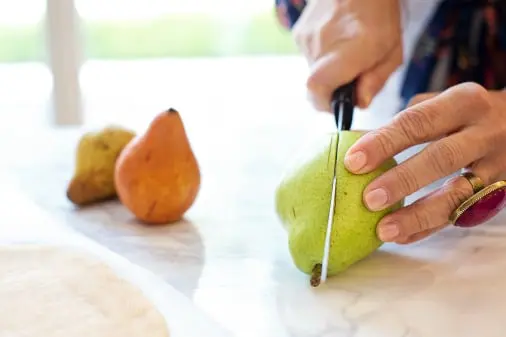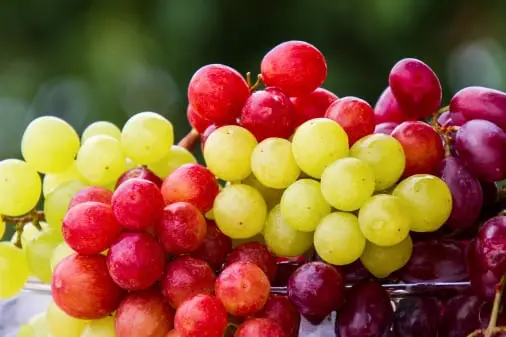Fresh cut packing storage sales traceability:
Fresh cut packing storage sales traceability: manage entire fresh cut manufacturing, packing, and distribution processes with Farmsoft Fresh Cut Packing traceability solutions.

Fresh cut packing storage sales Traceability during production & packing
View Traceability App Specifications.
Fresh cut packing storage, sales & traceability: manage the entire fresh cut manufacturing, packing, and distribution processes with farmsoft Fresh Cut & Packing solutions.
Use farmsoft to manage the entire Fresh cut packing, storage, fresh cut sales & traceability packing operation for any Fresh cut packing, storage, fresh cut sales & traceability specialty products including spinach, baby kale, green coral, mignonette, butter lettuce, 4 leaf salads, baby cos, rocket, arugula, chives, basil, bunch dill, bunch kale curly, bunch kale deck, bunch mint, bunch silver-beet, bunch tarragon, bunch thyme, tuscan kale, chard, continental parsley, cochran iceberg, cochran cos, mizuna, chard, salad blends, organic salad packs, Asian mix, braising mix, frissee, organic raw, raddichio, Lollorosa, red romaine, spring mix, wild arugula.
Configure the ingredients for each Fresh cut packing, storage, fresh cut sales & traceability recipe, project the required materials, produce orders based on requirements (or schedule new harvests or new plantings) to ensure Fresh cut packing, storage, fresh cut sales & traceability packing is accurate and easy to manage.
Fresh cut packing, storage, fresh cut sales & traceability
Fresh cut packing, storage, fresh cut sales & traceability
The pack to order process for Fresh cut packing, storage, fresh cut sales & traceability salad loose leaf lettuce packing has never been easier with farmsoft. Mange traceability for mixed salad loose leaf lettuce packing, perform quality tests on incoming mixed salad loose leaf lettuce, and track quality back to the supplier from customer complaints/feedback.
Customers can use the portal to enter their Fresh cut packing, storage, fresh cut sales & traceability salad loose leaf lettuce orders online; give your customers a superior mixed salad loose leaf lettuce ordering experience. You can even collect customer feedback for mixed salad loose leaf lettuce products received by the customer in the mixed salad loose leaf lettuce portal.

Fresh cut packing storage sales packhouse hygiene checklist for food safety
Software solution to manage loose Fresh cut packing, storage, fresh cut sales & traceability lettuce > Reduce loose leaf lettuce waste, improve loose leaf lettuce traceability, ensure accurate & timely Fresh cut packing, storage, fresh cut sales & traceability orders.
Precoolers help produce and fresh cuts stay fresh longer
Forced-air precoolers are essential to grower-packers around the world, in order to preserve freshness and shelf-life for fruits, vegetables, and flowers. “The simple fact is that, the faster you remove the field heat, and get the perishable to ideal storage temperature,” explained Jim Still, president of Global Cooling Inc., “the more saleable weight you retain, and the longer shelf life you have.”
“We are seeing increased interest from a number of fresh cut processors and packers, for ‘re-cooling’” claimed Still. “When they select or pull their raw product from cold storage, be it fruit, vegetables, or dip” he explained, “nearly everything starts at the ideal long-term storage temperature. But then - before, during, and after cutting and / or packaging - the product temperature can creep up into the mid-40-degree-farenheit range, sometimes even a little hotter. This is not a good thing for freshness and shelf-life, not to mention the “sell by” dates.”
Jet precooler production run
“This is when our Precoolers can be used as ‘Re-Coolers’”, he explained. “So many facilities’ managers, have little option but to put the pallets of packaged fresh cut, into their cold rooms’ pallet racking, and leave it there overnight to cool back down.” This, according to Still, is not best practices, nor does it maximize the shelf-life of the products. “Those ‘Best if Used By Dates’ on the packaging,” he stated, “are only reliable if the cold chain is unbroken. And if the recooling time after packaging is too long, well….”, he hesitated, seeming to try to find the right words, “well, your shelf life is variable. “

Fresh cut packing storage sales Traceability management best practices
“Our precoolers can re-cool palletized fresh cuts in one or two hours,” he claimed, “when set up in an existing cold room. Most often, additional refrigeration is not needed.” This is because, according to Still, the heat load coming off of fresh cuts “is much much less than with field temperature produce, often only 10-degrees-farenheit as opposed to 50- or 60-degrees. “ Still said that the speed of recooling with his equipment, “greatly simplifies the job of the operations manager, to have a predictable and reliable recooling time, instead of constantly checking on pallets every hour or two in cold storage to see how they are doing.”
Jet precooler recooling ripe avocados
Global’s precoolers are being used for other purposes, Still said, including drying onions, recooling ripened avocados, drying just-washed RPCs, recooling grapes and blueberries after fumigation, cooling cherries in MAP for export, and more. “Being located in Philadelphia, home of the cheese steak sandwich, “it is only a matter of time before we have a precooler used to temper beef before slicing,” he smiled.
“We have one customer that uses Jet-Ready Precoolers to speed-thaw pallets of frozen guacamole,” explained Still. “During peak avocado harvest time, they make a lot more guacamole than they can sell fresh, so the rest goes into frozen storage. And there is a lot of it,” he said. “Before they came to us, it was taking 30 days to thaw pallets of frozen product with room cooling, or maybe better put as ‘room thawing’, in a 34-degree-farenheit room. When you are shipping two truckloads a day, this meant that, at any given time, they might have as many as 1,200 pallets of product in cold storage, just slowly thawing. What a nightmare for operations, and what an expensive proposition.”

Fresh cut packing storage sales Supplier Traceability Management
After purchasing three of Global’s Jet-Ready Precoolers, and putting them to work in their 34-degree rooms in Los Angeles, Houston, and Newark, the thawing process is now accomplished in 12 hours. “Talk about night and day,” beamed Still. “Can you just imagine the difference our Jets made to this customer? Instead of hundreds and hundreds of thawing pallets in the cold room, he has at most 40 on an average day. And think about what the speed thawing process does for saleable shelf life and food safety….” He concluded, his words left hanging in the air.
Global’s factory is located in the Philly Navy Yard Business Park, nearby to this week’s Democratic National Convention, just off Broad Street in Philadelphia, Pennsylvania. “The city has closed both off ramps from I-95 to South Broad Street,” said Still, “as part of their security efforts. It’s an inconvenience, but a small price to pay to help safeguard our liberties and freedom.”
At the Navy Yard, Global manufactures both the portable Jet-Ready, and the palletracking-based Rapid-Cool, Precoolers, both of which are steadily growing in popularity among growers and warehousemen alike. “It might seem incongruent that a postharvest company is based on the East Coast,” continued Still, “when so many of the farms are on the West Coast, Texas, Florida, Mexico, and the Caribbean.” “But I like to think that some other revolutionary and valuable ideas had Philadelphia as their birthplace too,” he grinned. “And fresh cut facilities are most often located close to the regions or cities that they serve,” he explained, “which means we have quite a few of them in the Philly, New York, Baltimore, Boston corridor.”
New integrated sorting system for fresh-cut apples introduced
Key Technology introduced its new sorting system for fresh-cut apple products. This versatile solution integrates Key’s Iso-Flo® shakers, rotary sizing and grading systems, belt conveyors and a VERYX® digital sorter. Removing pieces of stem, seeds, calyx/flower and core as well as foreign material and product defects like dark and light stains, rot and skin, this apple sorting line automates inspection to significantly improve overall product quality and increase yield while reducing labor requirements.
Fresh cut packing, storage, fresh cut sales & traceability